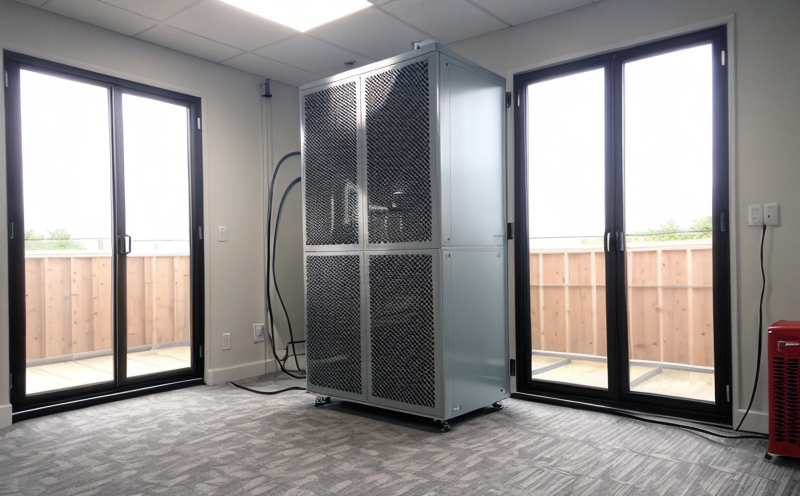HVAC System Airflow Functional Test
Ensuring that HVAC (Heating, Ventilation, and Air Conditioning) systems operate efficiently is crucial for maintaining comfortable indoor environments and energy efficiency. The HVAC System Airflow Functional Test plays a vital role in this process by verifying the performance of airflows within the system. This test ensures that the airflow meets design specifications, enhancing both occupant comfort and overall building sustainability.
During an HVAC airflow functional test, technicians evaluate various components such as fans, ducts, grilles, and diffusers to ensure they are functioning correctly. The primary goal is to determine if airflows throughout the system are consistent with design parameters. This testing can help identify issues early on, preventing costly repairs or replacements down the line.
The test begins by identifying all relevant airflow paths within the HVAC system. It then involves measuring static pressure differences across various sections of the ductwork to ensure proper operation. Additionally, air velocity is measured at key points using anemometers and other specialized equipment. By comparing these measurements against established standards like ASHRAE 55-2019 for thermal comfort or ANSI/ASHRAE Standard 62.1-2019 for indoor air quality, we can assess whether the system is performing optimally.
This testing also involves checking for any leaks in the ductwork which could lead to significant energy waste and reduced efficiency. Leaks cause conditioned air to escape into unconditioned spaces resulting in higher heating or cooling costs. Identifying these issues early allows for prompt repair, ensuring continuous operation at peak performance levels.
The HVAC System Airflow Functional Test is essential not only during initial installation but also as part of regular maintenance schedules. By conducting periodic tests, facility managers can ensure that their HVAC systems continue to meet the needs of their occupants while adhering to all relevant regulations and best practices.
Why It Matters
The importance of accurate airflow measurements cannot be overstated. Properly functioning HVAC systems contribute significantly to both occupant comfort and energy efficiency within buildings. When airflows do not meet expected standards, it can lead to several problems including increased operational costs due to wasted energy, discomfort for occupants, and potential health risks associated with poor indoor air quality.
Regular testing helps maintain optimal conditions inside commercial or residential spaces by ensuring consistent airflow distribution throughout the building. This contributes towards creating healthier environments free from allergens and other pollutants that might otherwise accumulate within poorly ventilated areas.
Scope and Methodology
| Component | Methodology |
|---|---|
| Ductwork Inspection | Visual inspection combined with pressure testing to identify any leaks. |
| Fan Performance Check | Measure fan speed and check for vibration using appropriate instrumentation. |
| Air Velocity Measurement | Use anemometers to measure air velocity at various points in the system. |
Benefits
Identification of leaks and inefficiencies leading to reduced energy consumption.
Enhanced occupant comfort by ensuring even air distribution throughout the space.
Promotion of healthier indoor environments through better ventilation practices.
Compliance with industry standards and regulations such as ASHRAE 55-2019 for thermal comfort.
Achievement of sustainable building goals by optimizing HVAC performance.





